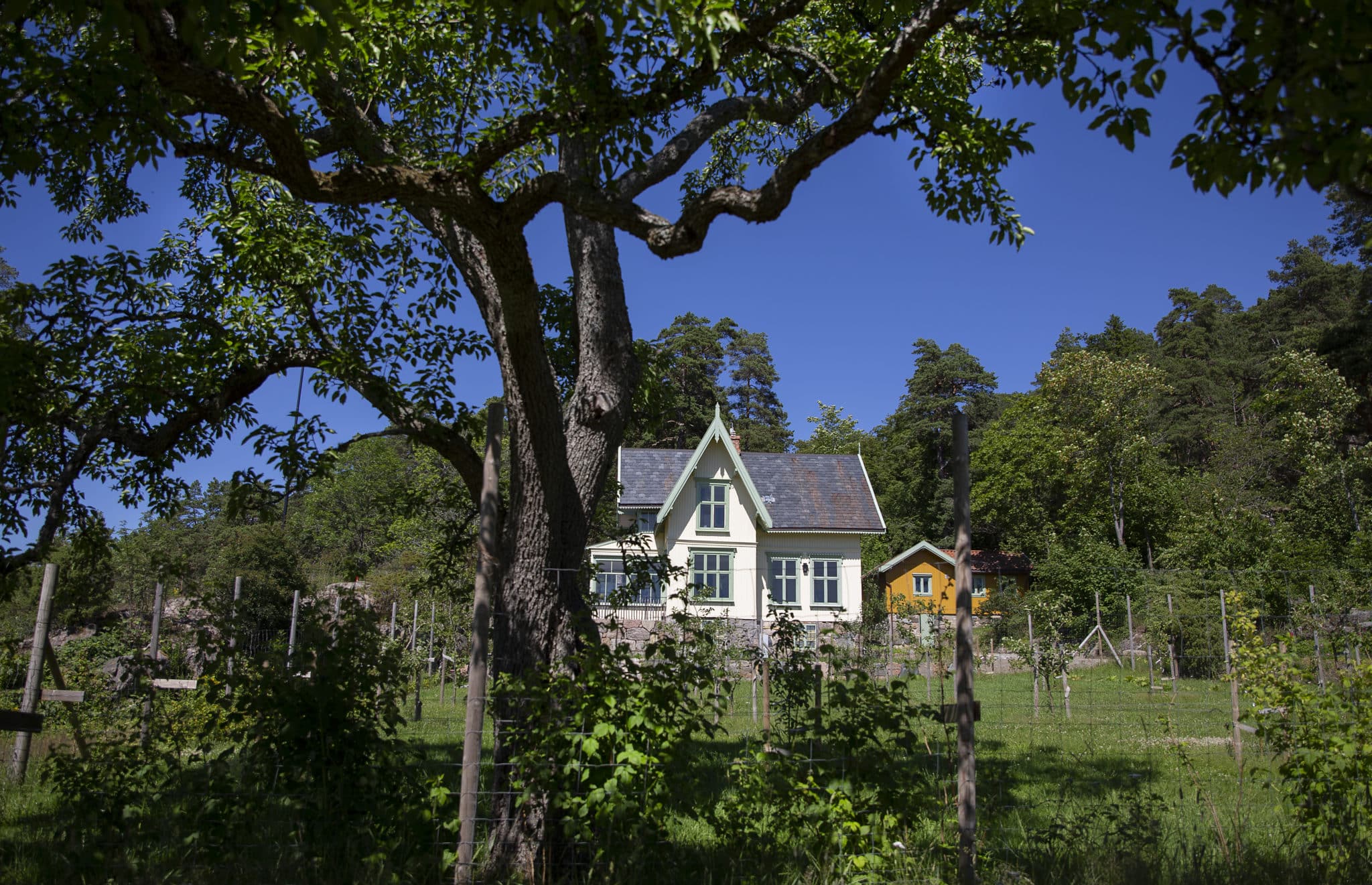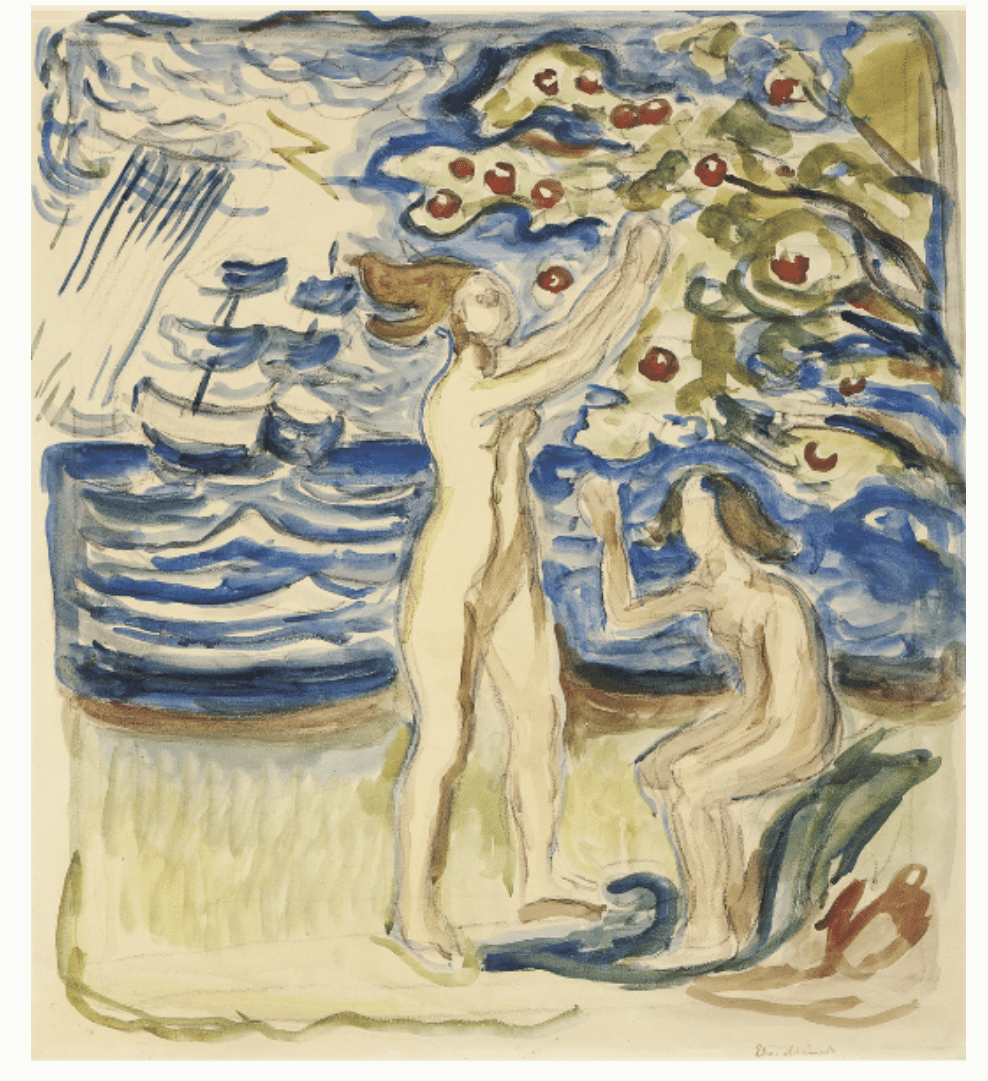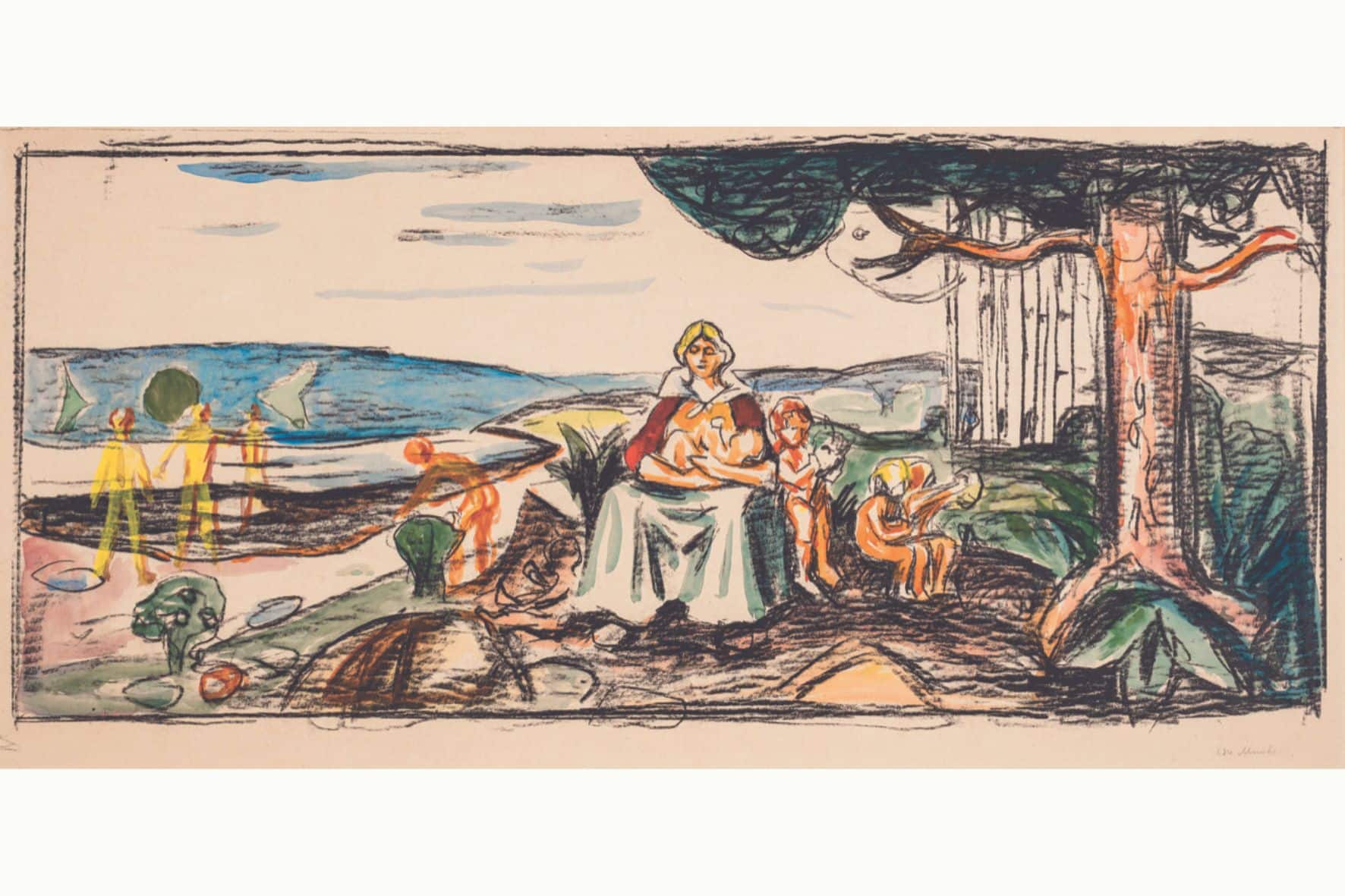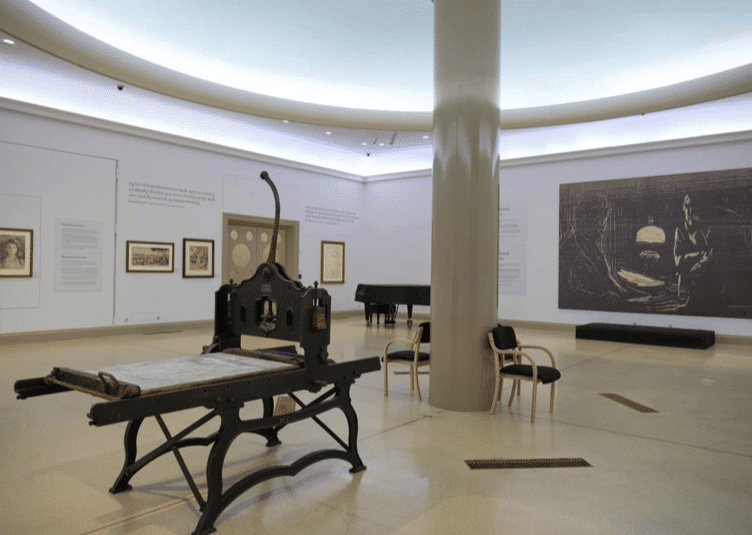The Aula Decorations
In conjunction with the centenary celebration of the University of Oslo in 1911, an aula was commissioned in classical style connected to the already existing building in Karl Johans gate. The auditorium was to be decorated with contemporary art and a competition to this effect was initiated with popular and renowned artists in 1909.
At Ramme, Munch sourced the concept design for one of three central motifs of the Aula’s eleven paintings: The Researchers/Alma Mater. Furthermore, the motif for Harvesting Women is also from Nedre Ramme. When it became clear that no one had won the competition and that the Aula was to be inaugurated with yellow silk wallpaper covering the walls, Munch continued his work on the decorations.
In the open-air studio at Nedre Ramme he made small-scale versions of the eleven motifs.
The small-scale Aula decorations were exhibited both at home and abroad, where they received publicity and aroused interest. This became an important contributing factor that has resulted in his Aula decorations (in large format) adorning the University Aula today.
Karen Borgen—Ingeborg and Solveig Kaurin’s mother—modelled for the mother figure in The Researchers/Alma Mater. The work Neutralia bears striking similarities to Harvesting Women in the Aula, and depicts Ingeborg Kaurin sitting under a tree, while her sister Solveig picks apples. Nedre Ramme remained in Edvard Munch’s possession until his death in 1944.







